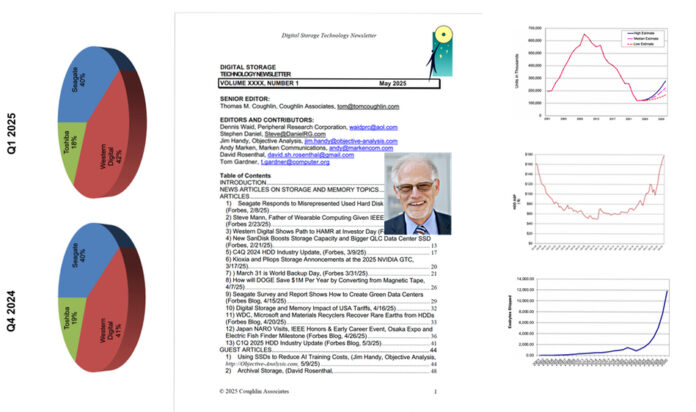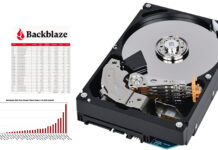An analyst report says disk drive capacity shipments are orojected to rise steeply bupwards between now and 2030.

This data is included in Tom Coughlin’s latest 174-page Digital Storage Technology Newsletter which looks at how the three disk drive suppliers fared in the first 2025 quarter and forecasts disk drive units abd capacity shipped out to 2030.
Leader Western Digital gained a point of market share from Toshiba in the first 2025 quarter as disk drive units and exabytes shipped both dipped relative to the final 2024 quarter.
There were 29.7 million drive shipped in the first 2025 quarter, about 9.5 percent down on the prior quarter’s 31.7 million, with mass-capacity nearline drive ships reducing 12 percent. The exabytes shipped total of 361.4 EB was down 4.4 percent over the same period. Total HDD supplier revenues were down around 8.4 percent quarter-on-quarter (Q/Q) to $5.242 billion.
- Western Digital delivered 12.1 million drives and 179.8EB with $2.294 billion revenues and 42 percent market share by units.
- Seagate shipped 11.4 million drives and 143.6 EB earning $2.003 billion with a 40 percent market share.
- Toshiba shipped 5.2 million drives and 41 EB with an 18 percent market share and $945 million in revenues.
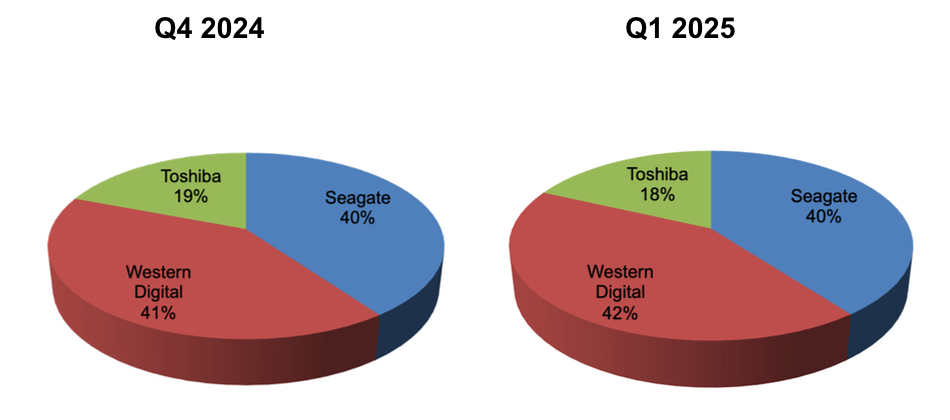
The drive format unit ship categories fared differently in a quarter-on-quarter (Q/Q) basis:
- Notebook: up 1.4 percent
- Desktop: up 1.4 percent
- Consumer Electronics: down 10.4 percent
- Branded: down 11.3 percent
- High-performance enterprise: down 15.2 percent
- Nearline enterprise: down 11.3 percent
Overall 3.5-inch drive unit shipped went down 8.7 percent to 22.7 million while 2.5-inch units dipped 12.9 percent to 6 million. This all reflects the increasing industry concentration on building 3.5-inch nearline drives.
Coughlin says there was a a 4.9 percent average sales price (ASP) increase Q/Q in Q1 2025 and presented a ASP history chart, based on Seagate and WD ASPs, showing a near-symmetrical bathtub curve:
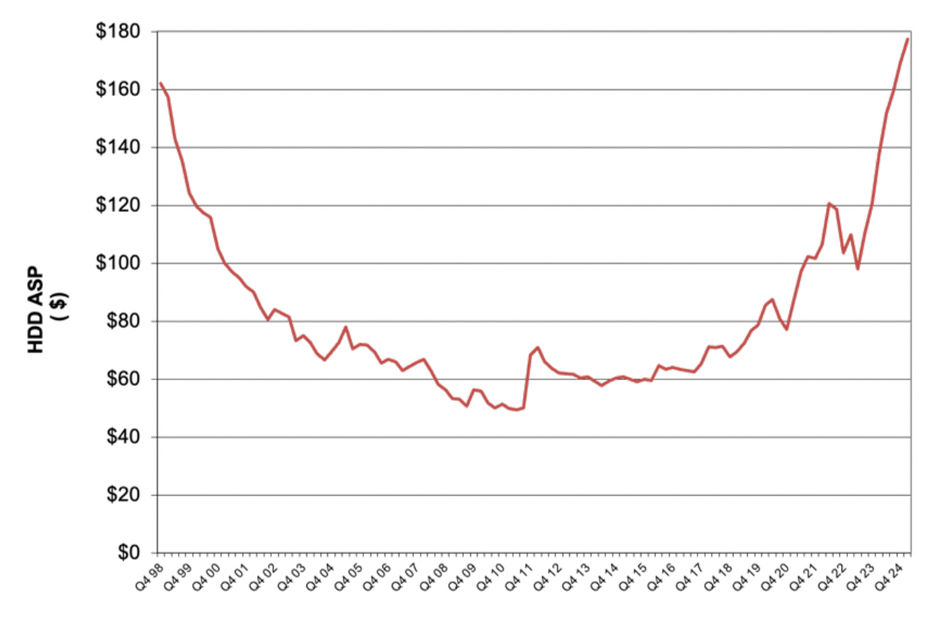
He notes: “HDD ASPs are now at levels higher than seen at the end of 1998 due to the increased demand for high capacity, high ASP, HDDs and the increase in the percentage of these drives shipped.”
The report includes a chart showing high, media and low estimates for HDD unit ships out to 2030, with all three rising:
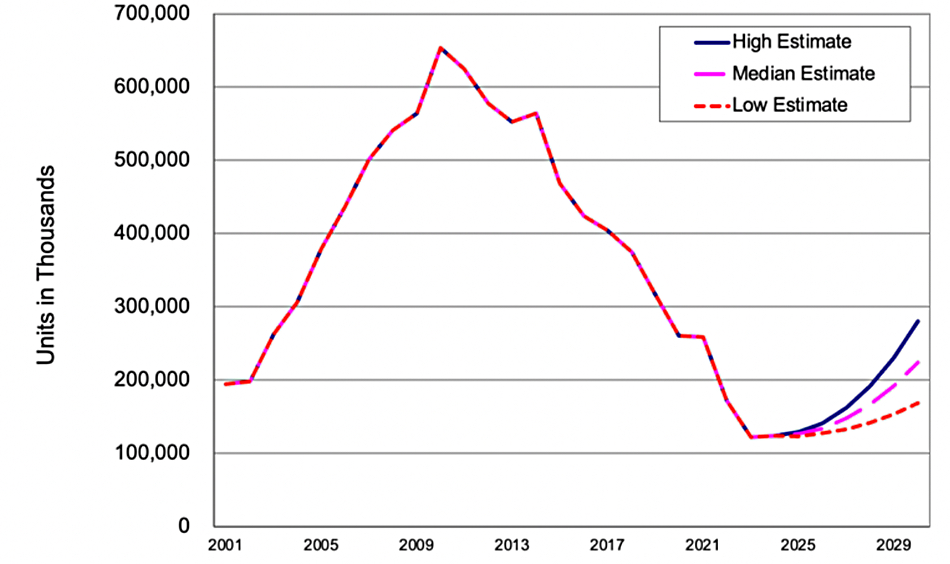
He reckons disk drive areal density has been increasing at 20 percent annually since the year 2000, with a 40-40 percent CAGR from 2000 to around 2010, and then a flattening off to something like 10 percent CAGR from then to 2024.
Coughlin’s report has a disk drive annual exabytes shipped projection chart showing a steep rise from 2024 to 2030:
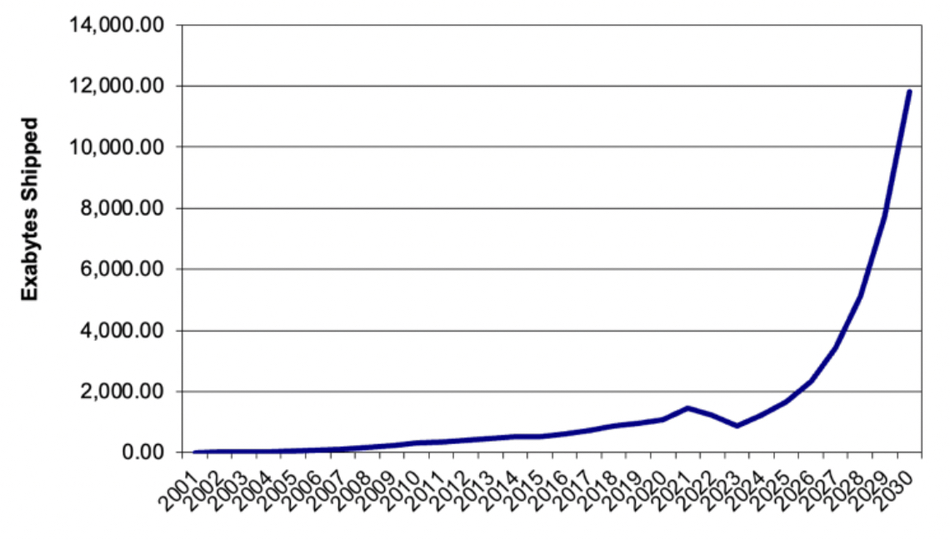
We don’t know if this is based on the high, medium or low HDD unit ship projections and have asked. Tom Coughlin replied: “Yes, these two [charts] are tied together. The capacity shipment projection reflects my projections for average storage capacity of the HDDs and the median shipment projection.”
Altogether, beyond the ongoing steady attrition of notebook, PC and high-performance disk drives by SSDs, there is no sign of SSDs replacing nearline, mass-capacity HDDs in any significant way at all.


